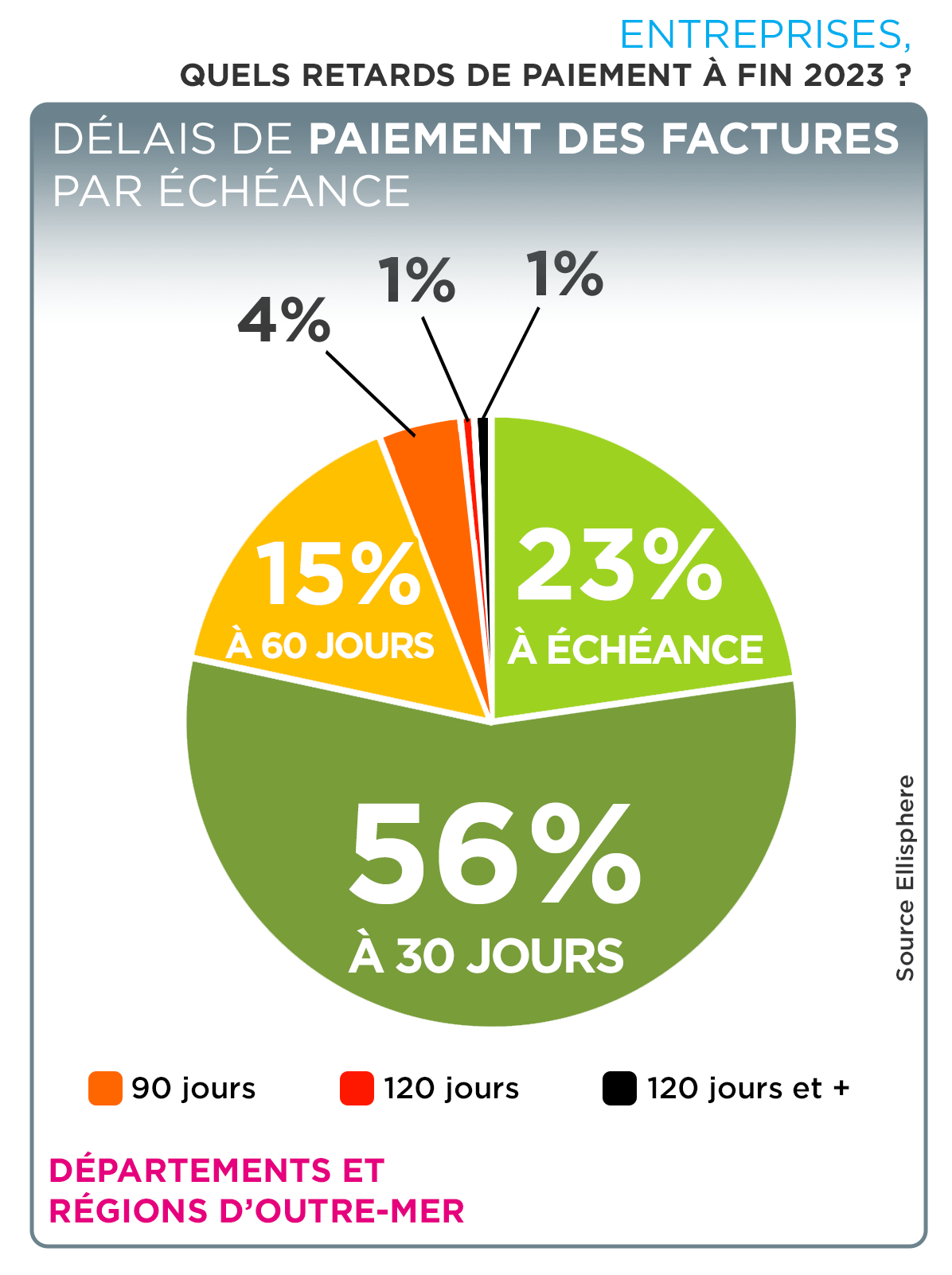By 2023, the French Overseas Departments and Regions will be following the same downward trend as mainland France, with a 5% reduction in average late payment (in days) across all business sectors. While this is a positive development, the average number of days late payment remains significant in the DROMs, at 23.5 days, compared with 17.7 days in mainland France.
A more detailed analysis reveals that late payments of less than 30 days are in the majority, accounting for 56% of total payments, compared with only 38% for companies in mainland France. On the other hand, late payments of 60 days or more (15%) are almost as numerous as payments on due date (23%), compared with 8% and 53% respectively for companies in metropolitan France, which are more likely to respect payment on due date.

An uncertain environment in 2024
The year ahead is shaping up to be a worrying one for many companies, impacted by an uncertain economic climate, ever-present geopolitical risks, and inflation in France which, while slowing, is still persistent. Even if, on the whole, companies are showing adaptability, very small businesses remain very fragile.
At the same time, tensions within small and medium-sized businesses (SMBs), plagued by the triad of inflation, raw materials and energy, remain high. As a result, many establishments currently feel threatened in the short term. Some companies are trying to optimize their energy savings, while others are postponing the investments they need to expand... Let's hope that, in the face of these difficulties, the recently announced extension of the repayment period for state-guaranteed loans (PGE) will prevent the much-feared worsening of insolvencies.
Last but not least, attacks on container ships in the Red Sea could cast a shadow over an already uncertain international environment, and have a knock-on effect on our companies' import costs and store prices. To avoid the dangers of this zone, operators would return to the historical routes (bypassing Africa via the Cape of Good Hope). This maritime route represents around ten extra days of navigation, generating higher costs. These increases will be passed on to the end customer, the consumer, who will arbitrate accordingly.



